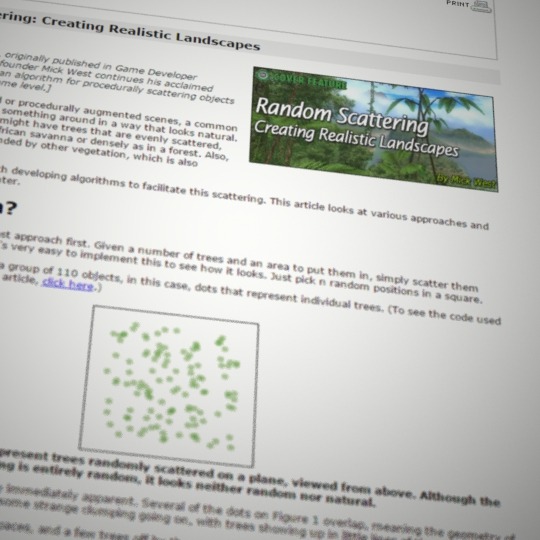
Gamasutra, if you’re not already aware of it, has a large repository of game developer focused material, including lots of technical breakdowns and postmortems. This article, Random Scattering: Creating Realistic Landscapes by Mick West was originally published in the late Game Developer magazine.
It’s got a number of useful things in it, but I want to highlight this part of it:
Two competing methodologies in procedural content generation are teleological and ontogenetic. The teleological approach creates an accurate physical model of the environment and the process that creates the thing generated, and then simply runs the simulation, and the results should emerge as they do in nature.
I’m not convinced that these are the best terms to use (a point others have brought up) but the distinction is important: do we create a bottom-up simulation of something and run it to emergently create the content, or should we just try to find a top-down process that mimics the final appearance of the thing we want?
Both approaches are valid, even for similar things. A top down terrain generator could use perlin noise to generate a height map, a bottom-up terrain generator could simulate tectonic plates and erosion. Each approach has different strengths and weaknesses, and often a combination of the two is useful.
http://www.gamasutra.com/view/feature/130071/random_scattering_creating_.php?page=1
